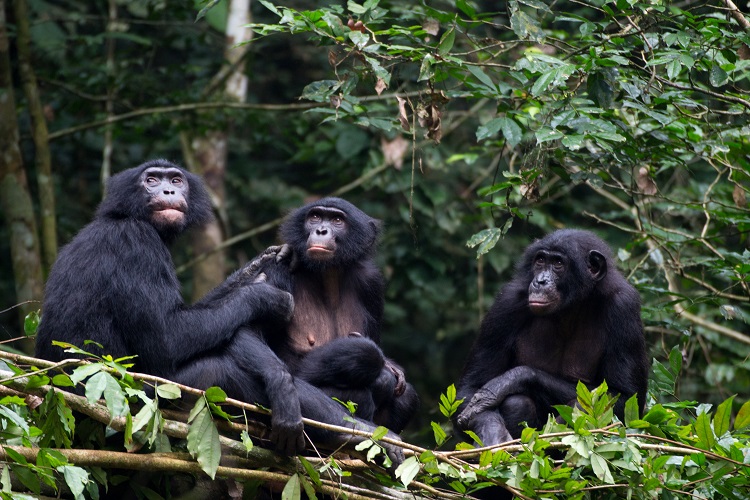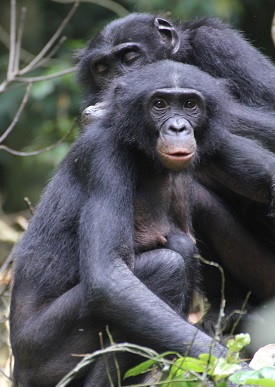
New research led by the University of St Andrews reveals bonobo chimpanzee gestures change meaning according to the specific context in which they are used, in the same way humans communicate.
The study, led by researchers from the School of Psychology and Neuroscience and published in the journal Gesture (Tuesday 19 October 2021), reveals that while bonobos, like other great apes including humans, use gestures to communicate, gestures can have multiple meanings depending on specific contextual settings.

The team of researchers studied gestures used by bonobos in the wild in Wamba, the Democratic Republic of Congo, to understand their meaning. The team studied the use of gestures between bonobos focusing on how other bonobos responded to specific gestures.
Lead researcher, Dr Kirsty Graham from the School of Psychology and Neuroscience at the University of St Andrews, said: "If the first bonobo raises her arm and the other bonobo comes to clean bits out of her hair, then the meaning is something like 'please groom me'. Sometimes it's just that simple, one gesture gets one response. But some types of gestures get a variety of different responses. For example, the arm raise gesture sometimes means 'please groom me' but it can also mean 'please carry me' or 'let's mate' - we wanted to find out if the context in which gestures were used and who they were directed to alter the meaning of the gesture."
In human language, syntax and context are very important for understanding words with multiple meanings. The research team tested the importance of syntax and context in bonobo gestures. The findings revealed if gestures were used in sequences or in certain positions in sequences it had no overall impact on the meaning of the gesture used. However, the study found that what the bonobo was doing when they gestured, i.e., behavioural context, and who the signaller and recipient were, i.e., interpersonal context, did have affect the meaning of a gesture.
Dr Graham added: "The study revealed that bonobo gestures seem to have very clear meanings in specific contexts. Contextual information is not only important in human language, but in non-human great ape gestures as well.
"We hope to soon be able to compare these findings with other great apes, including chimpanzees and gorillas, to better understand how important context is to our closest primate relatives."
The paper Context, not sequence order, affects the meaning of bonobo (Pan paniscus) gestures is published in the journal Gesture.
Please ensure that the paper's DOI https://doi.org/10.1075/gest.19028.gra is included in all online stories and social media posts and that Gesture is credited as the source.
All photos © Dr Nahoko Tokuyama, Wildlife Research Centre, Kyoto University.
All photos taken in Wamba, Luo Scientific Reserve, Democratic Republic of the Congo.






